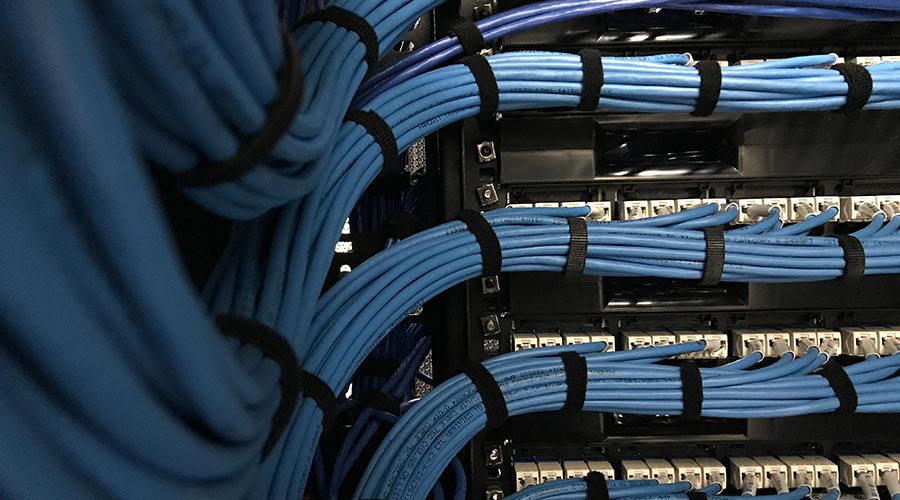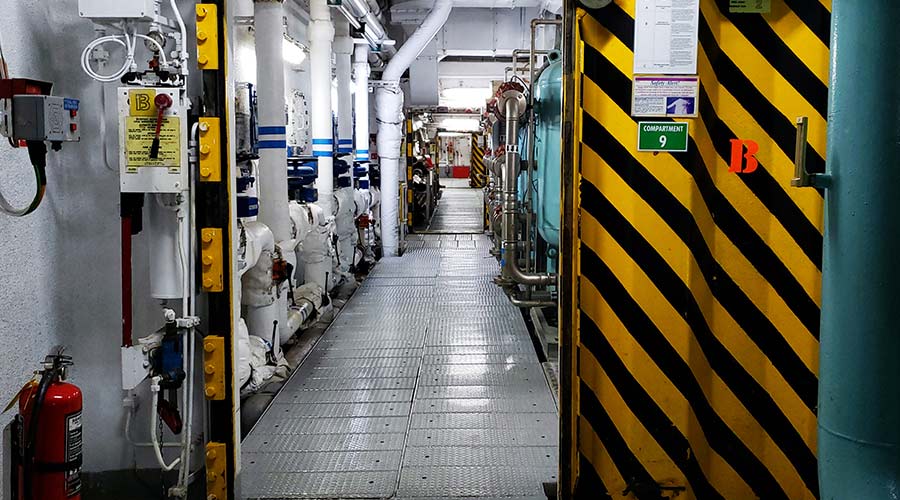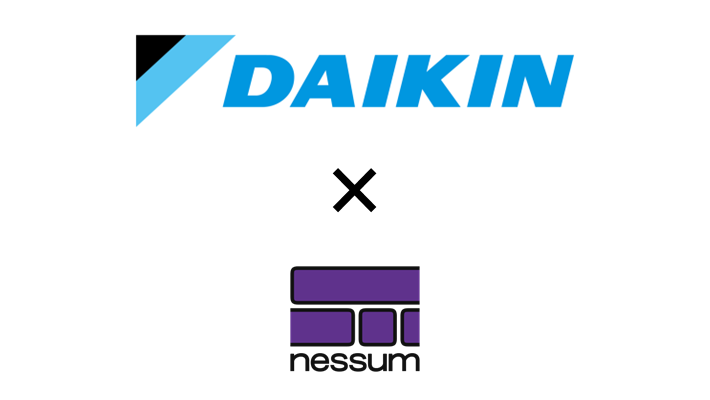Hybrid Network Solutions: What Are The Key Benefits Of Implementing HD-PLC In Wireless Networks?

The demand for more sophisticated networking solutions has grown rapidly in recent years, thanks to the advancements in automation and IoT technologies.
This has caused the concept of a hybrid network to become a buzzword across many industries.
However, the exact nature of what makes a network solution hybrid can sometimes be unclear — just like what challenges such a solution might pose.
In this article, we will thoroughly explore the principles of hybrid networking and, more specifically, hybrid wireless networking.
We will also review the challenges that hybrid networking inherently brings and introduce HD-PLC as a solution for those challenges, then review a few examples of how HD-PLC can be implemented in hybrid networks and improve their performance, cost effectiveness and reliability as a result.
What Is A Hybrid Network?
hybrid network or hybrid network topology consists of several different types of network topology — or logical and physical network architecture.
A good example of a hybrid network topology is the Star-Bus hybrid topology.
The Star-Bus topology combines two common network designs: The Star topology where the nodes of a network are individually connected to a single terminal, and the Bus topology where all nodes are connected by a single cable.
In a Star-Bus topology, the individual “Stars” are connected to each other in a Bus topology manner, resulting in the network’s hybrid architecture.
In a hybrid network, there might not only be different types of topologies present, but also different types of communication standards and equipment.
For example, a wireless hybrid network could feature Wi-Fi, Bluetooth and LTE connectivity at the same time, all implemented in one comprehensive infrastructure.
Moreover, a wired/wireless hybrid network can not only include different wireless communication standards, but also wired communication standards — such as Ethernet.
A good example of this is a network infrastructure, built around Wi-Fi routers that are connected to each other via Ethernet cabling.
What Are The Main Challenges Of Hybrid Networks?
Hybrid networks can provide great flexibility in sophisticated use cases — such as factory or building automation.
Nevertheless, they do come with a set of challenges that can considerably increase the cost and reduce the overall performance of the networking infrastructure:
- Wireless hybrid networks can have poor range: Hybrid networks are usually implemented in complicated physical environments, such as factories, cargo ships or underground tunnels. Such environments are often challenging for wireless connections: the wireless signal can be weakened by electromagnetic interference or physical obstacles. As a result, the signal might have trouble reaching all the necessary areas of the environment.
- Wired/wireless hybrid networks are costly: Building a wired/wireless hybrid network in a hard-to-reach location requires installation of additional equipment, such as LAN switches. However, such a solution can be costly, as it requires a considerable amount of Ethernet cabling, and the switches are required at every 100 meters.
- Covering a wide area with a hybrid network can be difficult: Due to the combined implications of the two challenges described above, it can be difficult to construct a hybrid network that covers a large area. In most cases, such a network is likely to end up too cost-inefficient or ineffective.

How Does HD-PLC Resolve Hybrid Network Challenges?
The technology that has emerged as an answer to the challenges of hybrid networks, and wired/wireless hybrid networks in particular, is the concept of HD-PLC/wireless hybrid networks.
Such networks rely on the key advantages of the HD-PLC technology to resolve some of the common challenges that wired/wireless networks pose:
- Reduced network cost: One of the key elements of the HD-PLC technology is that it can rely on existing wiring to transfer data and does not require the installation of additional cabling. HD-PLC is also functional over almost any existing cable type, such as twisted pair, coaxial or AC power wiring. As a result, the overall network cost can be reduced dramatically. For example, in a wired/wireless network, HD-PLC can be used to connect the wireless infrastructure over the power lines that power the wireless equipment, without requiring any additional investments into cabling, like an Ethernet-powered solution would.
- Strong performance over long distances: Thanks to the Wavelet-OFDM signal modulation method, HD-PLC boasts drastically reduced data loss and interference — even in hybrid solutions. As such, it’s capable of achieving data transmission rates of tens of Mbps. HD-PLC can also be implemented following the Multi-hop protocol, which allows an extension of the network to distances of up to several kilometers.
- Simplified network architecture: An HD-PLC network is considerably simpler to install compared to other widespread standards, such as Ethernet of Fieldbus. Almost any existing wiring infrastructure can be converted to an HD-PLC network, with the help of a few adapters and terminals, making the network installation and maintenance processes relatively cost-friendly and time-efficient.
HD-PLC/wireless hybrid networks are effective solutions when the goal is to provide reliable connectivity at a reasonable cost.
By comparison, HD-PLC can provide a connection that is faster and more stable than Wireless. And while the performance of HD-PLC is not always on the same level as Ethernet, the cost of installing an HD-PLC is considerably lower than that of Ethernet.
As a result, HD-PLC is an optimal networking solution in scenarios where Ethernet’s extra performance capabilities don’t justify its cost.
Ready to build your own HD-PLC network?
Examples Of Wireless/HD-PLC Hybrid Networks
Because of the inherent benefits that HD-PLC can bring to hybrid networks, it’s commonly found in wired/wireless hybrid networks, which, perhaps, most commonly suffer from the challenges of hybrid networking solutions.
Let’s look at a few examples of HD-PLC/wireless hybrid solutions that demonstrate the potential of this technology.
Example #1: Network Infrastructure Of Smart Street Lighting
Municipal Wi-Fi networks usually consist of access points installed on street light poles.
These networks serve a double purpose: to enable remote management of street lighting and to provide internet connectivity to city residents and tourists.
Such networks are commonly built using individual Wi-Fi access points on each street light pole, with Ethernet wiring or wireless protocols connecting them.
However, this setup has an inherent drawback: high cost. Connecting the access points with Ethernet wiring can be a very costly solution, as it requires a considerable amount of wiring and hardware to be installed. Also, in the case of a wireless protocol connection, a connection fee is required on the individual terminal.
That’s precisely why HD-PLC has emerged as a solution for such use cases. It allows street light poles to interconnect with the Wi-Fi access points using the power lines that link the street light poles to the electrical grid.
The resulting network can then be connected to a single HD-PLC terminal, which is connected to the server via LTE. The resulting set up is not only more cost-effective, but it also doesn’t come at the cost of connection quality.
Example #2: Network Infrastructure In Underground Tunnels
Providing wireless internet access in underground tunnels can be challenging due to the lackluster mobile service and the prohibitive cost of installing Ethernet cabling over the distances of several kilometers.
However, all underground tunnels are by default equipped with some sort of wiring to provide electricity.
By utilizing this exiting wiring to transfer data in a HD-PLC/wireless hybrid system, the overall network cost can be reduced significantly without any sacrifices to the quality of service.
Example #3: An Intranet Infrastructure Aboard A Tanker Ship
Ships are very complicated areas when it comes to providing a stable communication network.
The IT infrastructure of many tanker ships is outdated and not capable of supporting a broadband, high-performance communication network. That’s why a wireless network is often used.
However, the performance of such a network can suffer due to the construction of a ship, as the strength of a wireless signal is affected by the multiple metal walls and partitions inside the ship.
On the other hand, installing an Ethernet network to connect the different parts of the ship can be too costly and labor-intensive.
As such, an HD-PLC/wireless hybrid network presents itself as the only plausible networking solution that is capable enough to provide uninterrupted networking service to every part of the ship.

HD-PLC And Wireless Hybrid Networks — Key Facts To Remember
The adoption of hybrid networks has been accelerating due to the growing demand for automation and IoT solutions.
However, hybrid networks are not entirely without their challenges.
Even though such solutions are capable of powering sophisticated networks, they can often end up being too costly or overengineered if implemented with conventional networking standards.
Implementing HD-PLC in such networks can help alleviate some of the common challenges they pose while providing a reliable, high-speed, broadband connection.




